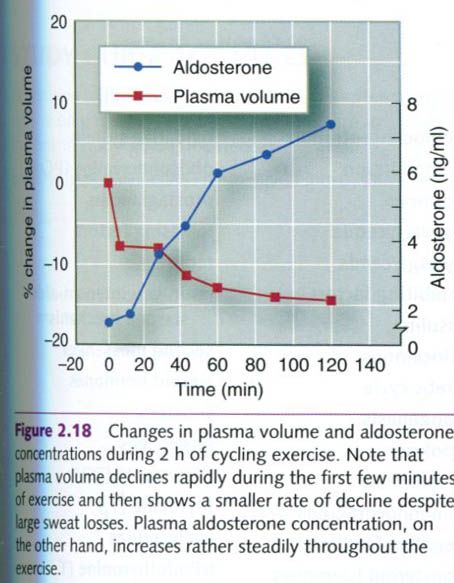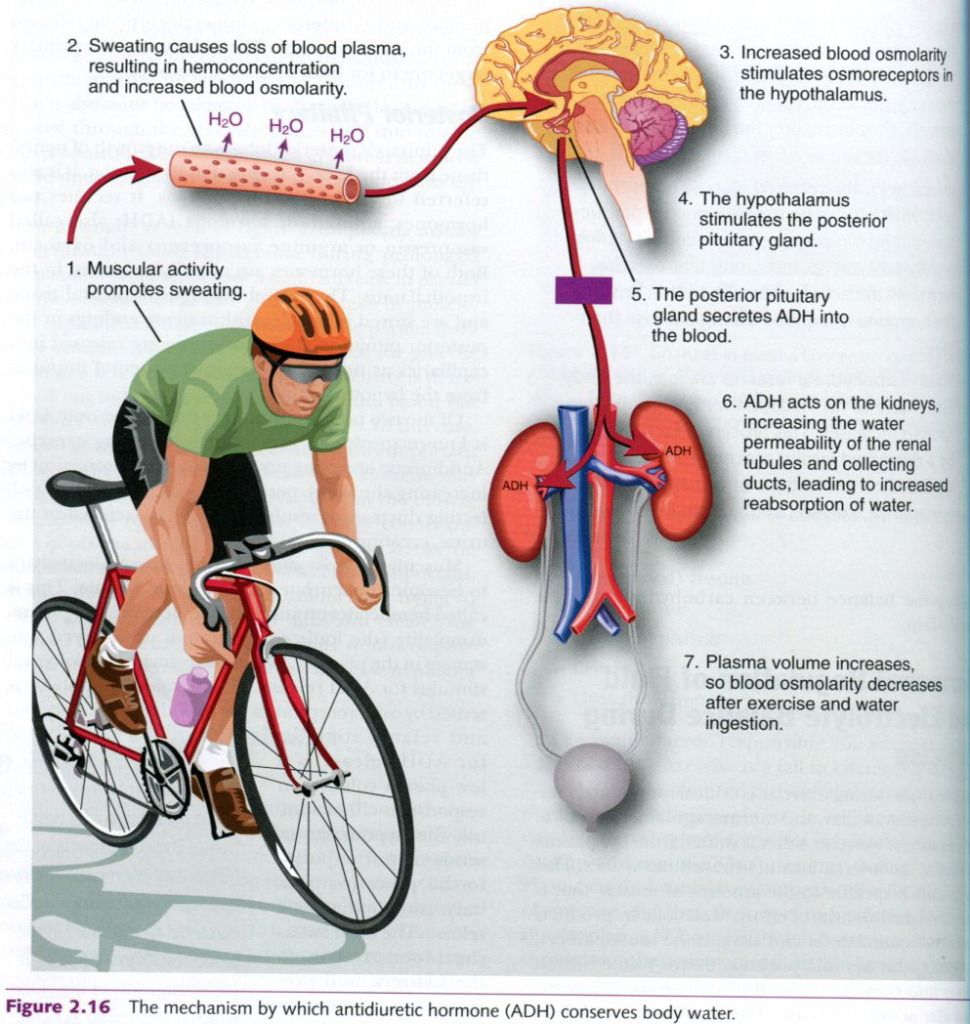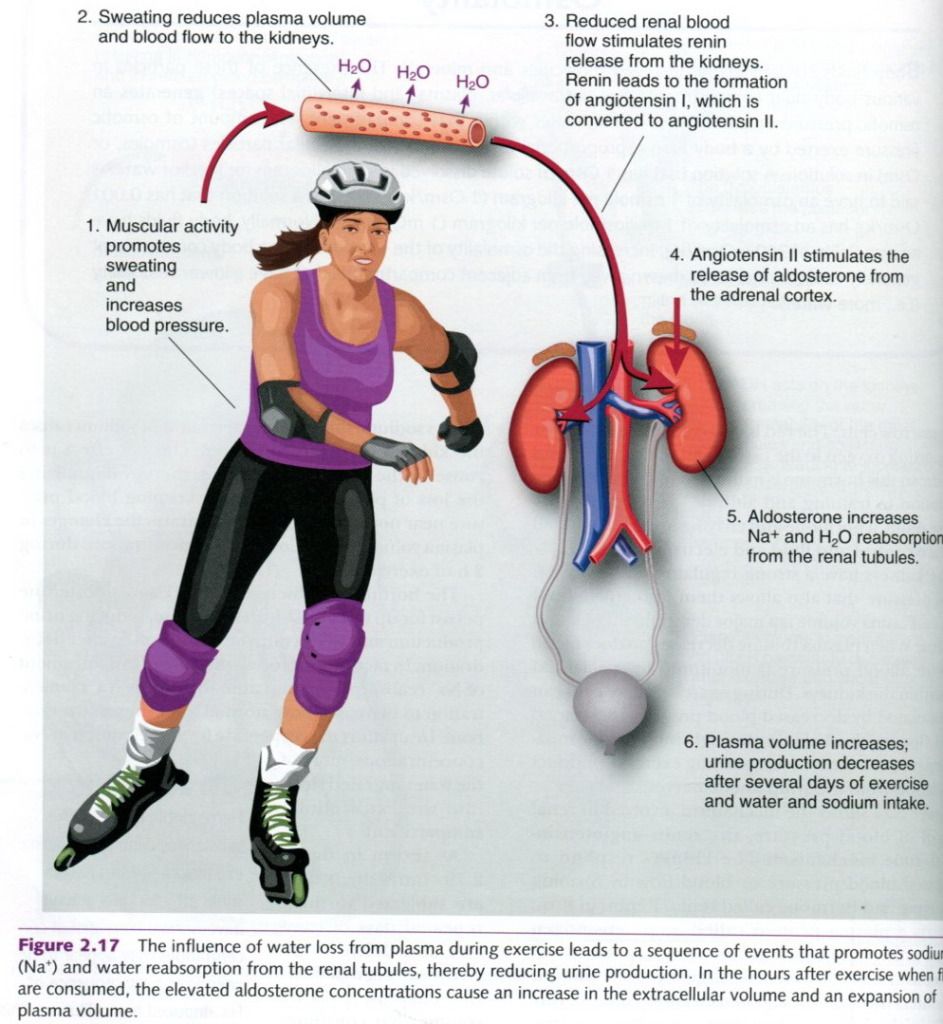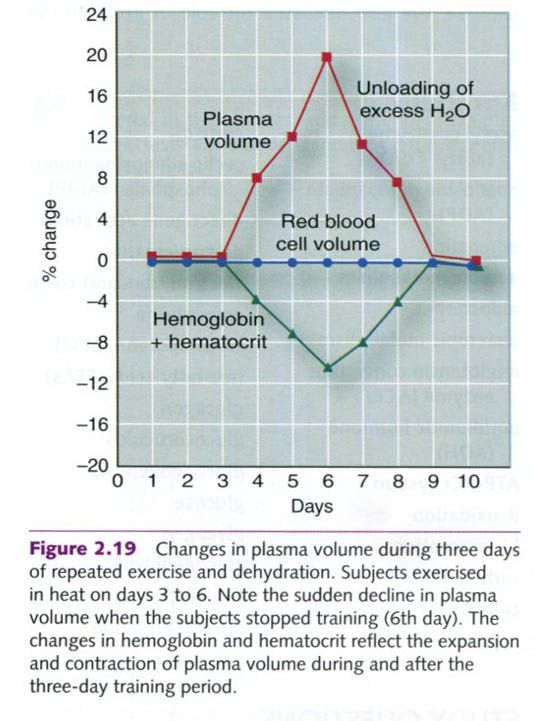The endocrine system plays a major role in
monitoring fluid levels and correcting imbalances, along with regulating
electrolyte balance, especially that of sodium. The two major hormones involved
in this regulation are antidiuretic hormone released from the posterior
pituitary and aldosterone, a mineralocorticoid released from the adrenal
cortex. The kidneys are the primary target organ for both of these hormones.
Posterior pituitary
The pituitary’s posterior lobe is an outgrowth
of neural tissue form the hypothalamus. For this reason, it is also reffered to
as the neurohypophysis. It secretes two hormones; antidiuretic hormone(ADH; also called vasopressin or arginine
vasopressin) and oxytocin. Both of these hormones are actually produced in the
hypothalamus. They travel through the neural tissue and are stored in vesicles
within nerve endings in the posterior pituitary. These hormones are released
into capillaries as needed in response to neural impulses from the
hypothalamus.
Of the two posterior pituitary hormones, only
ADH is known to play an important role during exercise. Antidiuretic hormone
promotes water conservation by increasing the water permeability of the
kidneys’ collecting ducts. As a result, less water is excreted in the urine,
creating an “antidiuresis”.
Muscular activity and sweating cause
electrolytes to become concentrated in the blood plasma. This is called hemoconcentration, and it increases the
plasma osmolality(the ionic
concentration of dissolved substances in the plasma). This is the primary
physiological stimulus for ADH release. The increased osmolality is sensed by
osmoreceptors in the hypothalamus. A second and related stimulus for ADH
release is a low plasma volume. In response to either stimuli, the hypothalamus
sends neural impulses to the posterior pituitary, stimulating ADH release. The
ADH enters the blood, travels to the kidneys, and promotes water retention in
an effort to dilute the plasma electrolyte concentration back to normal levels.
This hormone’s role in conserving body water minimizes the extent of water loss
and therefore the risk of severe dehydration during periods of heavy sweating
and hard exercise. Picture below illustrates this process.
Adrenal cortex revisited
The mineralocorticoids,
secreted from the adrenal cortex, maintain electrolyte balance in the
extracellular fluids, especially that of sodium(Na+) and potassium(K+). Aldosterone is the major
mineralocorticoid, responsible for at least 95% of all mineralocorticoid
activity. It works primarily by promoting renal reabsorption of sodium, thus
causing the body to retain sodium. When sodium is retained, so is water: thus,
aldosterone, like ADH, results in water retention. Sodium retention also
enhances potassium excretion, so
aldosterone plays a role in potassium balance as well. For these reasons, aldosterone
secretion is stimulated by many factors, including decreased plasma sodium,
decreased blood volume, decreased blood pressure, and increased plasma
potassium concentration.
Kidneys
Although the kidneys are not typically
considered major endocrine organs, they release a hormone called erythropoetine. Erythropoetin(EPO)
regulates red blood cell(erythrocyte) production by stimulating bone marrow
cells. The red blood cells are essential for transporting oxygen to the
tissues and removing carbon dioxide, so this hormone is extremely important in
our adaptation to training and altitude. The kidneys also release renin, a
hormone and enzyme involved in blood pressure control and fluid and electrolyte
balance.
The kidneys have a strong regulatory influence
on blood pressure that also allows them to regulate fluid balance. Plasma
volume is a major determinant of blood pressure: when plasma volume decreases,
so does blood pressure. Blood pressure is monitored by specialized cells within
the kidneys. During exercise, these cells can be stimulated by decreased blood
pressure, decreased blood flow to the kidneys through increased sympathetic nervous
activity accompanying exercise, or direct stimulation from the sympathetic
nerves.
Figure shows the mechanism involved in renal
control of blood pressure, the
renin-angiotensin-aldosterone mechanism. The kidneys respond to decreased
blood pressure or blood flow by forming an enzyme and hormone called renin. Renin, in turn, converts a
plasma protein called angiotensinogen into an active form called angiotensin I.
In the blood, angiotensin I is converted to angiotensin II when it encounters
the enzyme angiotensin converting
enzyme(ACE) in the lungs. Angiotensin converting enzyme inhibitors are a
class of drugs used in the treatment of high blood pressure. They lower blood
pressure by blocking, or inhibiting, the conversion of angiotensin I to angiotensin
II. Angiotensin II acts in two ways. First, it is a potent constrictor of blood
vessels. Through this action, peripheral resistance increases, which raises the
blood pressure. The second job of angiotensin II is to trigger aldosterone
release from the adrenal cortex.
Recall that aldosterone’s primary action is to
promote sodium reabsorption in the kidneys. Because water follows sodium, this
renal conservation of sodium causes the kidneys to also retain water. The net
effect is to conserve body’s fluid content, thereby minimizing the loss of
plasma volume while keeping blood pressure near normal. Figure below
illustrates the changes in plasma volume and aldosterone concentrations during
2h of exercise.
The hormonal influences of ADH and aldosterone
persist for up to 12 to 48h after exercise, reducing urine production and
protecting the body from further dehydration. In fact, aldosterone’s prolonged
enhancement of Na+ reabsorption may cause the body’s Na+
concentration to increase above normal following an exercise bout.

As shown in the figure on the right side, individuals who
are subjected to three repeated days of exercise and dehydration show a
significant increase in plasma volume that continues to increase throughout the
period of activity. This increase in plasma volume appears to parallel the
body’s retention of dietary Na+. When the daily bouts of activity
are terminated, the excess Na+ and water are excreted in urine.
Most athletes involved in heavy training have
an expanded plasma volume, which dilutes various blood constituents. The actual
amount of proteins and electrolyte(solutes) within the blood remains unaltered,
but the substances are dispersed throughout a greater volume of water(plasma),
so they are diluted and their concentration decreases. This phenomenon is
called hemodilution.
“Physiology of sport and exercise”, fourth edition; Jack H. Wilmore, David L. Costill, W. Larry Kenney
“Physiology of sport and exercise”, fourth edition; Jack H. Wilmore, David L. Costill, W. Larry Kenney












1 коментара:
I am hubungan diabetes darah tinggi grateful to find your blog from the search, when I visit here I get very nice information
Постави коментар